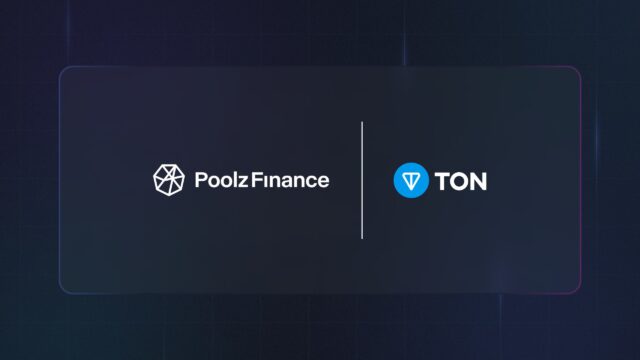Ethereum (ETH) is one of the largest smart-contracts blockchains that have been heavily used for years. But its high transaction fee and slow transaction time are the biggest drawbacks. As more users join the ETH network, new issues continue to arise.
Several new projects have been launched to fill the gaps, including Avalanche and Fantom. But there is one project that has resolved almost all the issues in Ethereum. Optimism Blockchain is a current ETH layer 2 solution that is faster and less expensive than ETH.
Continue reading to learn all about Optimism Blockchain.
What is Optimism?
Optimism is a popular Ethereum layer 2 scaling solution, which functions on top of the Ethereum Mainnet layer 1. It is driven by a technology known as optimistic roll-ups, which converts large amounts of transaction data into small batches. The transaction data gets posted to Mainnet, where the authenticity is checked.
Optimism is currently the second most significant Ethereum layer 2, with around $313 million in smart contracts. At the time of writing, there are around 35 protocols active on Optimism that have at least $1000 locked into their smart contracts. The protocols that use scaling techniques include Synthetix, Uniswap, and Aave.
The derivatives liquidity protocol, Synthetix, is the most extensive protocol on Optimism, with a total value locked (TVL) of $125 million. While Uniswap (DEX – a decentralized exchange) is the second most prevalent protocol on the chain. Optimism is way cheaper than Ethereum, which is why it has been becoming increasingly popular along with other 2s layers, like Arbitrum.
Working with Optimism
Optimism uses an advanced technology known as roll-ups, more commonly known as Optimistic roll-ups. It keeps the data compressed and speeds up by cutting the cost of Ethereum transactions.
Other than that, it keeps things simple by relying on the lowest number of moving parts. They are given this name because they roll up or make a bundle of data about hundreds of transactions. The data can be either non-fungible tokens (NFT) mints, token swaps, or any transaction into a single transaction on the Ethereum Mainnet. When a large number of transactions get rolled into a single transaction, the blockchain transaction or the gas fee comes down to only one transaction, resulting in a much lesser gas fee.
The optimistic roll-ups are given this name because all the transactions are assumed to be authentic and valid until proven fake. There is a specific time frame under which supposed invalid transactions could be challenged. A “fraud-proof” could be submitted and run of the transactions’ computations with reference to available state data.
Optimism Tokens and their Use Cases
Optimism launched its token called “OP Token” in May 2022. It has a total supply of 4.29 billion tokens, out of which only 7% are in circulation. The rest tokens are yet to hit the market. At the time of writing, the OP token is worth $2.45 and its worth will continue to grow, as predicted by experts.
An optimism token allows holders to participate in the optimism protocol governance and funding of public goods. It provides value through the re-deployment of Sequencer revenue. Also, it contributes to a value ecosystem within the optimism project.
Advantages and Disadvantages of Optimistic Roll-ups
The main advantage of optimistic roll-ups is that they are general while maintaining intelligent contracts similar to underlying innovative contract-enabled blockchains. They provide care for smart contracts within the roll-up without additional development needs.
However, it comes with some disadvantages as well. Optimistic roll-ups take layer 2 users to withdraw funds to the underlying blockchain. It is because they have to rely on external validators to check the validity of transactions before the state can be updated. There is a need for sufficient time for these validators to check the activity.
Here is a list of its pros and cons.
Pros of Optimistic Roll-ups
- Extremely high computational flexibility
- Data is kept on a chain, and there is no need to trust-off chain data providers.
- Optimistic roll-ups can enhance Ethereum TPS without centralization sacrifices.
- Provide a better and faster user experience
Cons of Optimistic Roll-ups
- Optimistic roll-ups have less than layer-2 solutions like ZK Roll-ups and Plasma.
- Security concerns are frequently observed.
Future Milestones
Optimism has recently published the launch of a transaction system called Drippie which is trust-minimized and Ethereum-native conditional. It is a programmable Web 2 service that will combine different triggers with actions. Also, it will allow users to make transactions under some conditions.
According to OP, Drippie plans to state automation problems with on-chain movement, further enhancing optimism blockchain performance. Last year, the team submitted a proposal to increase the resources of the optimism network since their use and network adoption is a challenge for OP token. Bedrock came into being in a strong, cheaper, faster, and highly advanced market.
Final Words
Optimism has already become the most used layer 2 scaling solution on ETH and has witnessed the success of over $1 billion in TVL over 70 Dapps in a short period of time. The team is currently working on impressive next-generation technology that would take the crypto industry to new heights.
Wanna know more on Poolz Finance? Read Here.






